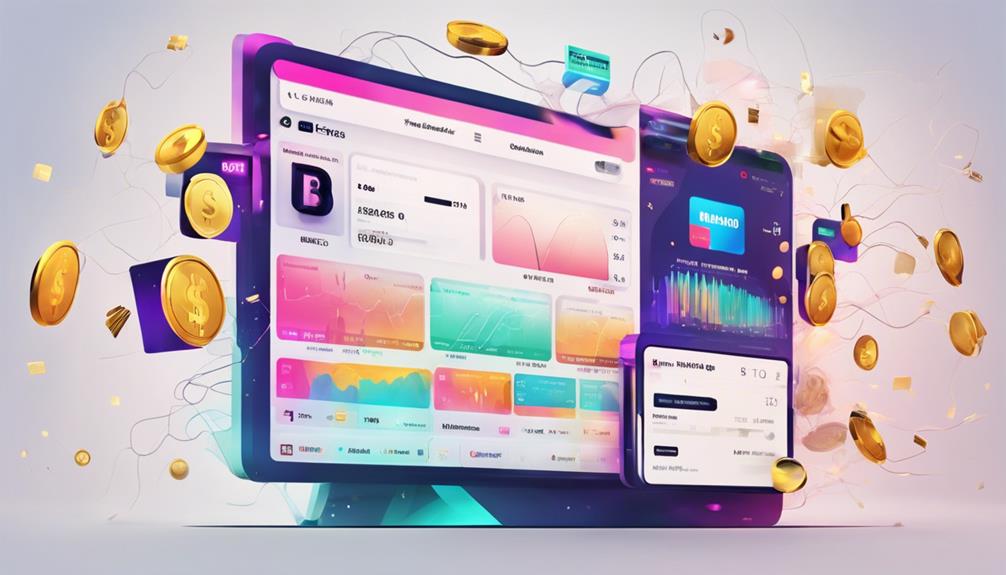Spotify guarantees fair earnings distribution through royalty calculations and artist payouts. The net revenue is determined by deducting fees and commissions, with a 70/30 split between artists/rights holders and Spotify. Distributors like DistroKid guarantee equitable earnings distribution. Revenue opportunities increase with enhanced streaming numbers, ad-supported streams, and brand partnerships. Merchandise integration and ticket sales boost revenue further. Constantly evolving, Spotify explores diverse revenue streams including subscription services and exclusive content deals. Global expansion and data-driven decision-making aid in strategic partnerships and industry adaptation. With these strategies, Spotify maximizes revenue potential and supports artists' earnings through its platform. Explore more on Spotify's monetization methods!
Key Takeaways
- Spotify converts streams into revenue through a pro-rata distribution model.
- Royalty calculation system considers agreements for fair artist payouts.
- Distributors like DistroKid ensure accurate royalty payments to artists.
- Revenue is increased through brand partnerships and merchandise integration.
- Diverse revenue streams include subscriptions, ads, and exclusive content deals.
Royalty Calculation Process
In understanding how Spotify converts streams into revenue, the royalty calculation process plays an important role, employing a complex system to determine artists' payments. Spotify calculates net revenue by subtracting collected fees and commissions from Premium subscriptions and ads. This net revenue forms the basis for calculating royalties.
Streamshare, another significant factor in this process, determines the rightsholders' share of the net revenue based on the total number of streams. Unlike a simple per-play rate, Spotify's royalty calculation system is intricate and takes various agreements with labels, distributors, and collection societies into account.
As a result, artists receive their royalties through monthly payments, with the specific amounts varying based on individual agreements and distribution methods. This detailed approach ensures that artists are compensated fairly for the use of their music on the platform, reflecting the innovative and dynamic nature of the music industry today.
Artist Payout Structure
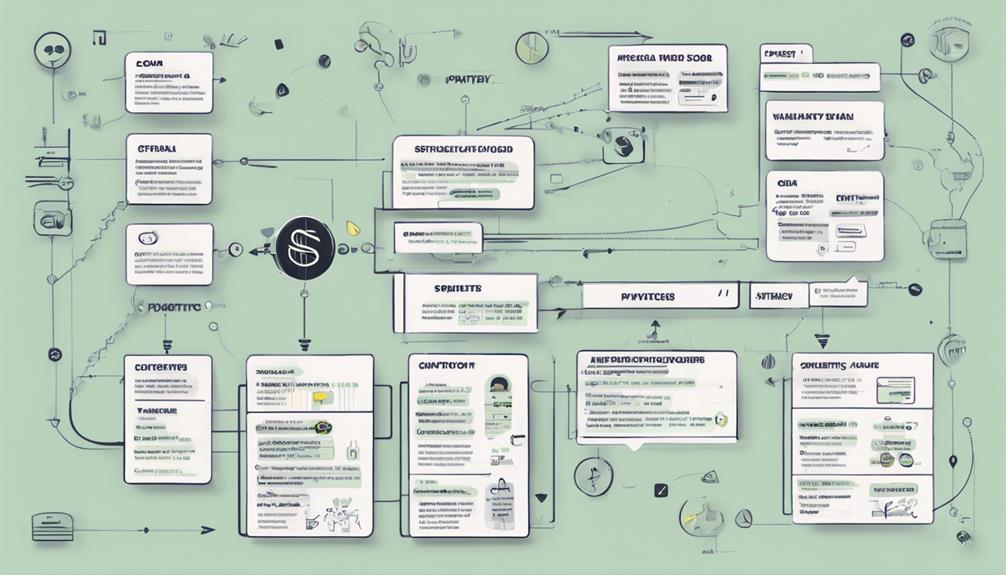
The artist payout structure on Spotify involves a revenue split of approximately 70% to the artist/rights holders and 30% to Spotify. When it comes to paying artists for their music streams, Spotify follows a pro-rata distribution model, meaning that the total payout is divided among artists based on their streams.
On average, artists receive between $0.003 to $0.005 per stream. Please be aware that these pay-per-stream rates aren't fixed and can vary due to multiple factors influencing the music industry landscape. Different types of streams, such as free ad-supported streams versus premium subscriber streams, also impact the revenue generated for artists.
Understanding the artist payout structure on Spotify is essential for musicians looking to monetize their music and navigate the digital streaming world effectively. By staying informed about how Spotify pays artists for their streams, musicians can better strategize their music releases and marketing efforts to maximize their earnings in this evolving industry.
Distributor's Role in Payments

Distributors like DistroKid and CD Baby play a crucial role as intermediaries between Spotify and artists. They ensure a smooth flow of payments by handling the intricate process of collecting earnings from Spotify and distributing them accurately to artists.
With their expertise in payment processing methods, revenue distribution process, and payment transparency measures, distributors are essential for ensuring artists receive their rightful royalties.
Payment Processing Methods
Working closely with streaming platforms like Spotify, payment processing methods are facilitated by distributors who play an essential role in ensuring artists receive their royalties accurately and on time. Spotify tracks streams using analytics to calculate royalties owed to artists, which are then collected by distributors like DistroKid or CD Baby.
These distributors play an important role in collecting earnings from Spotify and distributing them to artists and rightsholders. Before disbursing the royalties, distributors typically take a small percentage cut for their services. By managing the payment processing methods, distributors help streamline the flow of earnings from Spotify to the rightful recipients, ensuring a fair and transparent distribution of royalties in the music industry.
Revenue Distribution Process
Playing a pivotal role in the revenue distribution process, music distributors are instrumental in collecting and disbursing royalties from streaming platforms like Spotify. They handle payments to artists and rightsholders, deducting their fees before distributing the remaining royalties. Artists can track their streaming revenue through detailed analytics and reports provided by distributors. When artists choose a distribution service, factors like fees, services offered, and transparency in royalty payments play an important role. Distributors make sure that the process of receiving streaming royalties from digital streaming platforms is efficient and transparent, maximizing the earnings an artist makes.
- Distributors collect earnings based on the number of streams.
- They deduct fees before distributing royalties.
- Detailed analytics and reports help artists track revenue.
- Artists consider fees, services, and payment transparency.
- Distributors facilitate efficient and transparent royalty payments.
Payment Transparency Measures
Maintaining transparency in the payment process is a critical aspect of the distributor's role in handling royalties from streaming platforms like Spotify. Distributors track and aggregate streams, calculate earnings, and distribute payments to artists and rightsholders. Spotify relies on distributors to guarantee transparent and accurate payment processes. A small fee may be deducted by distributors before distributing royalties to artists. Working with a reputable distributor can streamline the royalty payment process for artists on Spotify.
| Aspects of Payment Transparency Measures | Description | Importance |
|---|---|---|
| Stream Tracking | Monitor stream data | Ensures accurate royalty calculation |
| Earnings Calculation | Compute artist earnings | Transparent payment distribution |
| Fee Deduction | Subtract fees | Covers distribution costs |
| Rightsholder Payments | Distribute royalties | Ensures artists receive money |
Analytics for Artist Insights
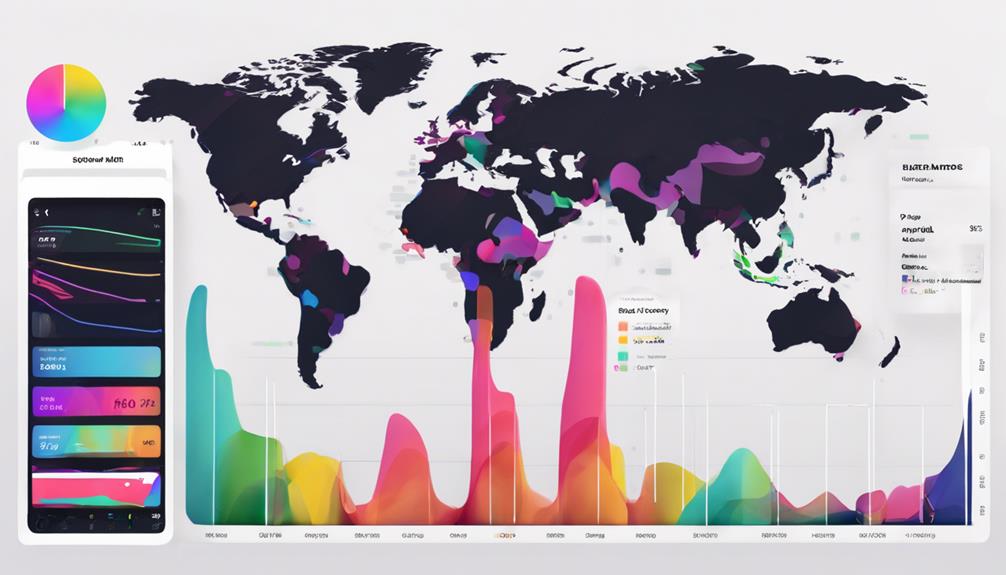
Spotify's analytics provide artists with a wealth of data on their audience demographics, streaming trends, and listener engagement. By tracking performance metrics like playlist placements and follower growth, artists can tailor their music promotion strategies effectively.
Understanding these insights can empower artists to make informed decisions to enhance their music promotion and engage more effectively with their fans.
Artist Performance Data
Providing detailed insights on listener demographics, geographic locations, and streaming trends, Spotify's analytics dashboard empowers artists to understand their audience's preferences and behaviors effectively. With access to artist performance data, here's how Spotify helps artists thrive:
- Data on listener engagement
- Insights on playlist placements
- Information on follower growth
Understanding of audience preferences
- Informed decisions on marketing strategies
Audience Demographics Insights
Obtaining valuable insights into audience demographics is crucial for artists utilizing Spotify's Artist Insights analytics tool. By leveraging demographic data, artists can gain a deeper understanding of their listeners' age, gender, and location, enabling them to tailor their music promotion strategies effectively.
The analytics provided by Spotify Artist Insights also offer information on listener engagement, popular playlists, and follower growth, empowering artists to make informed decisions about their marketing campaigns.
Additionally, detailed insights on listener behavior, including skip rates and repeat listens, allow artists to track the success of their promotional efforts and make necessary adjustments.
With these extensive analytics at their disposal, artists can optimize their outreach and engagement strategies to maximize their impact on Spotify's platform.
High Play Count Benefits
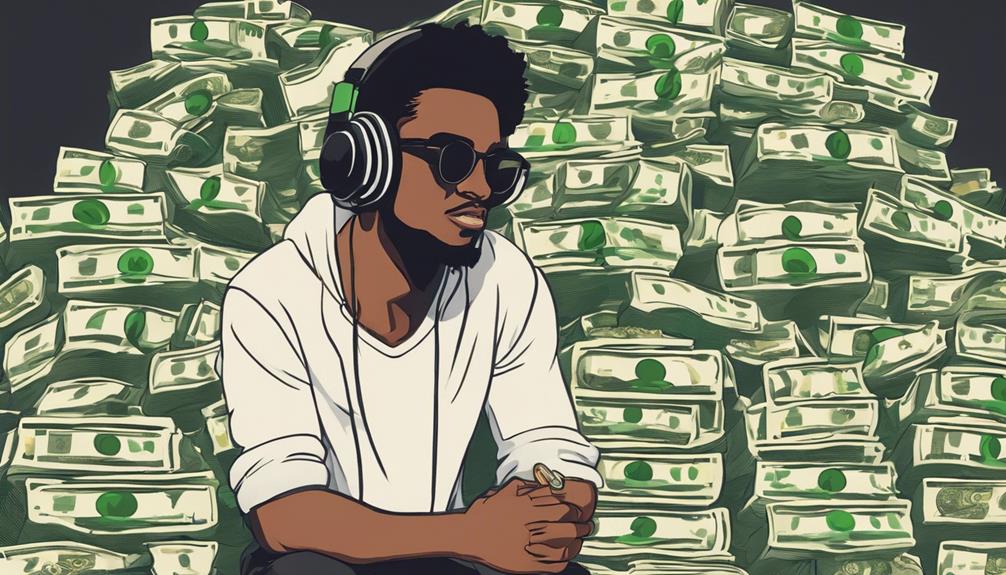
When artists accumulate high play counts on Spotify, they can access significant earnings potential, with payouts averaging between $0.003 to $0.005 per stream. This per-stream rate translates to the possibility of earning $3,000 to $5,000 for every million plays on Spotify, showcasing the income artists can generate from streaming.
Additionally, successful artists with top play counts can even make hundreds of thousands or millions of dollars annually from royalties on Spotify. Here are some key benefits of high play counts for artists:
- Enhanced revenue opportunities through increased streaming numbers.
- Potential for substantial earnings from royalties on Spotify.
- Ability to generate significant income through successful music distribution platforms.
- Access to detailed analytics that track streams and calculate earnings accurately.
- Collaborative efforts with distributors like DistroKid or CD Baby for seamless royalty collection and distribution.
Accumulating high play counts not only boosts an artist's visibility but also opens up lucrative financial prospects in the ever-evolving landscape of the music industry.
Revenue From Ad-Supported Streams
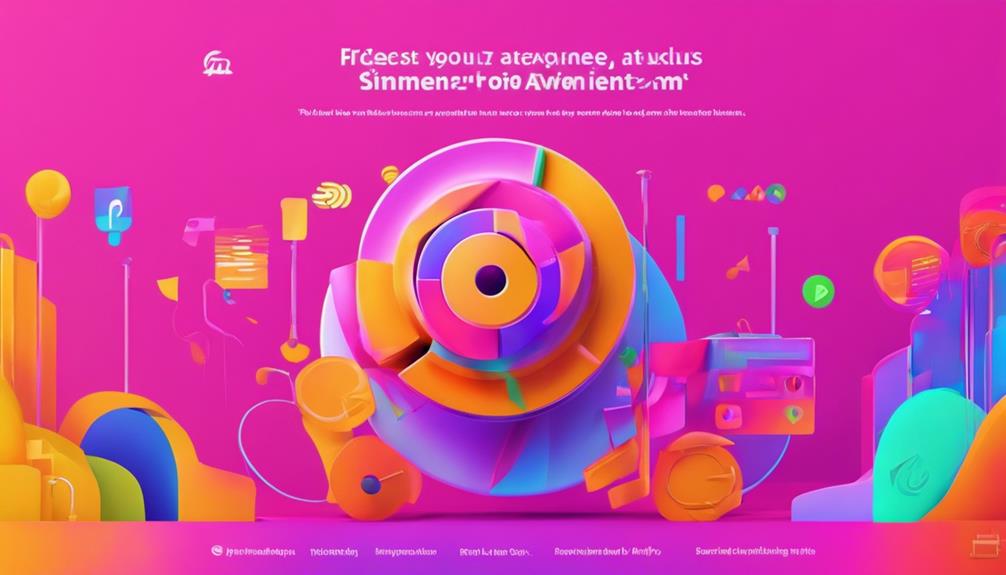
Spotify generates revenue from ad-supported streams on its platform, playing an important role in the overall royalty pool for artists and rights holders. Ad-supported streams are essential in Spotify's revenue model, helping artists earn royalties from listeners on the free tier. By paying artists and rights holders based on the number of ad-supported streams, Spotify guarantees that these stakeholders benefit from the platform's advertising revenue. Below is a breakdown of how revenue from ad-supported streams impacts artists and rights holders:
| Benefit | Explanation |
|---|---|
| Additional revenue stream | Artists receive royalties from ad-supported streams, diversifying their income sources. |
| Increased exposure | Ad-supported streams can introduce new listeners to an artist's music, expanding their fan base. |
| Support for independent artists | Ad-supported streams provide a platform for emerging artists to reach a wider audience. |
This table illustrates how ad-supported streams on Spotify contribute to the revenue and exposure of artists and rightsholders, playing a significant role in the music industry ecosystem.
Subscription Revenue Sharing

Moving from the revenue generated through ad-supported streams, the sharing of subscription revenue on Spotify is a vital aspect of the platform's partnership with music rights holders. Here are key points to understand about subscription revenue sharing:
- Spotify utilizes a streamshare model to distribute subscription revenue among rights holders.
- The 'streamshare' calculation involves dividing the rightsholders' streams by the total streams on Spotify.
- Rights holders receive a portion of the net revenue collected from Premium subscription fees.
- Subscription revenue plays an essential role in providing income for artists and labels on Spotify.
- This distribution model helps compensate rights holders for the use of their music on the platform.
Subscription revenue sharing on Spotify ensures that artists and labels are fairly compensated for their work, creating a sustainable ecosystem where creativity thrives.
Brand Partnerships and Sponsorships
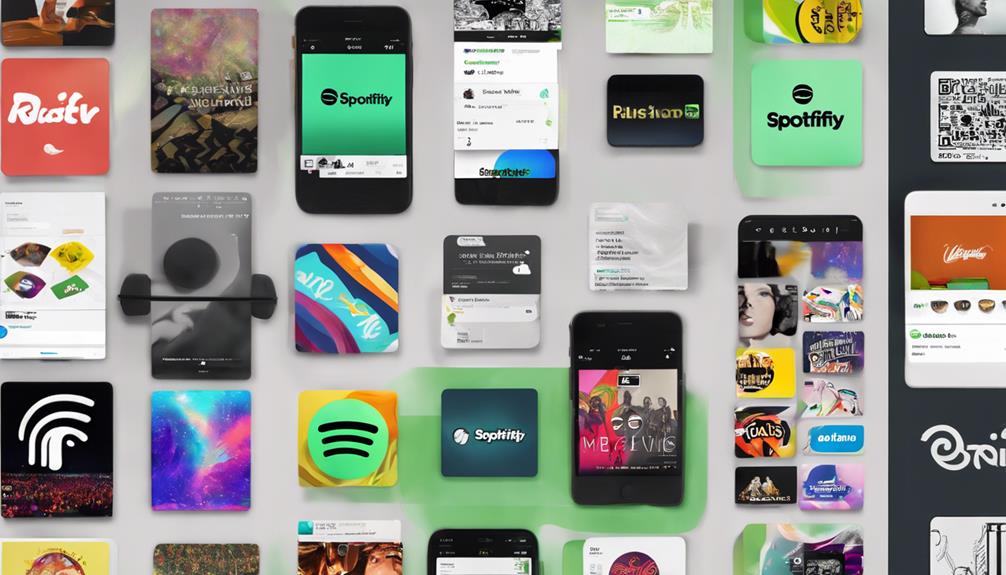
When it comes to brand partnerships and sponsorships, Spotify leverages sponsored playlists, collaborations with brands, and targeted ads to boost revenue and increase profits.
These strategic alliances not only benefit Spotify by adding to its bottom line but also offer brands a platform to connect with a vast audience of music enthusiasts.
Through targeted advertising and curated content, Spotify creates a win-win situation where brands gain visibility, and users enjoy a more personalized listening experience.
Sponsored Playlists Boost Revenue
Partnering with brands for sponsored playlists greatly boosts revenue for Spotify through increased streams and exposure for the sponsored content. This strategy effectively monetizes streams on Spotify by leveraging brand partnerships and advertising collaborations. Under these circumstances:
- Sponsored playlists create additional revenue streams for Spotify.
- The exposure from sponsored playlists enhances brand partnerships.
- Specific demographics or genres can be targeted with sponsored playlists.
- Advertisers pay for sponsored playlist placements on the platform.
- Revenue is increased through the promotion of sponsored content.
Collaborations With Brands
In our collaborations with brands, we create innovative sponsorships and partnerships to generate additional revenue streams on Spotify. Brand partnerships on our music streaming platform can involve exclusive playlists, artist promotions, and branded content.
These collaborations help brands reach Spotify's massive user base and engage with music fans, offering unique promotional opportunities for artists and brands. Sponsorship deals on Spotify can include targeted advertising, product placements, and co-branded campaigns, enhancing user experience.
Targeted Ads Increase Profits
To maximize revenue streams, Spotify strategically leverages targeted ads through brand partnerships and sponsorships, honing in on specific user demographics for maximum impact.
- Spotify partners with brands to boost revenue.
- Brand sponsorships target specific user demographics.
- Targeted ads provide personalized content based on user preferences.
- Brand partnerships seamlessly integrate ads to enhance the user experience.
- Revenue from targeted ads is vital for Spotify's monetization strategy.
Through these innovative approaches, Spotify guarantees that users receive relevant and engaging content while creating lucrative opportunities for brand collaborations. By tailoring ads to individual preferences and behaviors, Spotify not only increases profits but also enhances the overall user experience on the platform.
Merchandise and Ticket Sales Integration

Maximizing revenue streams beyond mere music plays, Spotify seamlessly integrates merchandise and ticket sales for artists, offering fans direct access to exclusive items and event experiences. By partnering with performing rights organizations, distribution companies, and collection societies, Spotify empowers independent artists to boost their earnings through these additional channels.
Artists can showcase and sell merchandise such as t-shirts, posters, and other items directly to their fan base, enhancing fan engagement and loyalty. Additionally, the platform facilitates the promotion and sale of tickets for concerts, live events, and tours, providing a one-stop shop for fans to access both music and event experiences.
This integration not only allows artists to capitalize on their streaming success but also creates a more immersive and interactive environment for fans. Leveraging Spotify's vast reach and user base, artists can transcend traditional revenue streams like recording royalties and tap into the lucrative market of merchandise and ticket sales, expanding their financial opportunities in the digital age.
Future Monetization Strategies
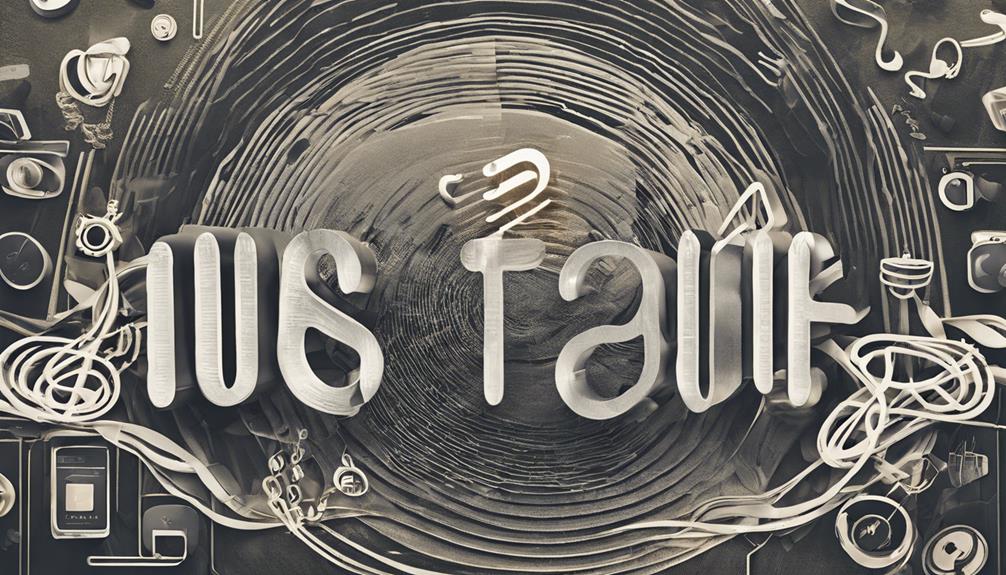
Exploring innovative approaches like NFTs, blockchain technology, and direct fan interactions, we aim to enhance artist revenue and user engagement through future monetization strategies at Spotify.
- Collaborations with brands: Partnering with brands can create new revenue streams through sponsored playlists or exclusive content.
- Virtual events: Hosting virtual concerts or events can offer unique experiences for users, driving engagement and potential revenue.
- Exclusive content: Providing exclusive tracks or behind-the-scenes access to artists can attract premium subscribers and generate additional income.
- Data-driven decision-making: Utilizing user data to personalize recommendations and target ads effectively can lead to increased monetization opportunities.
- Constant evolution: Adapting to industry trends and user preferences is essential to maximizing revenue potential and staying ahead in the competitive streaming landscape.
Frequently Asked Questions
How Spotify Streams Turn Into Royalties?
When we talk about how Spotify streams turn into royalties, it's all about the number of streams an artist's music receives. The more streams, the more potential earnings in royalties.
Spotify calculates royalties based on this stream count and distributes them to rightsholders from a portion of its revenue. This process is essential for artists' income from the platform, converting streams into monetary compensation that reflects the popularity of their music.
How Much Does 1,000 Streams on Spotify Pay?
When 1,000 streams play on Spotify, artists usually earn between $3 to $5. This payment varies based on listener location and subscription tier.
The complex royalty calculation system used by Spotify influences how much artists make per stream. The revenue generated from 1,000 streams also depends on the type of account streaming the song.
Typically, artists can earn around $3,000 to $5,000 for every million plays on Spotify.
How Does Spotify Make Money off of Streams?
When streams play on Spotify, we earn revenue through Premium subscriptions and ads. Spotify gathers 2/3 of the net revenue as a 'royalty pool' and pays rights holders based on the 'streamshare' system. Artists receive royalties based on stream numbers.
This model distributes net revenue from subscriptions and ads to rightsholders, explaining how Spotify monetizes streams.
How Do You Collect Money From Spotify Streams?
When we collect money from Spotify streams, royalties are essential. Spotify pays artists based on the number of streams their songs receive. These royalties are calculated using complex algorithms that consider various factors.
Distributors like DistroKid or CD Baby handle earnings from Spotify and distribute them. Royalties are split among artists, songwriters, producers, and labels before being paid out.
It's fascinating how analytics accurately track streams to guarantee fair payments.
Conclusion
To sum up, Spotify's innovative ways of turning streams into money demonstrate the power of music in today's digital landscape.
From royalty calculations to artist payouts, analytics insights to brand partnerships, the platform has created a diverse range of opportunities for musicians to thrive.
As the music industry continues to evolve, Spotify's ability to monetize streams opens up new avenues for artists to connect with fans and generate revenue, painting a promising future for the music industry.

